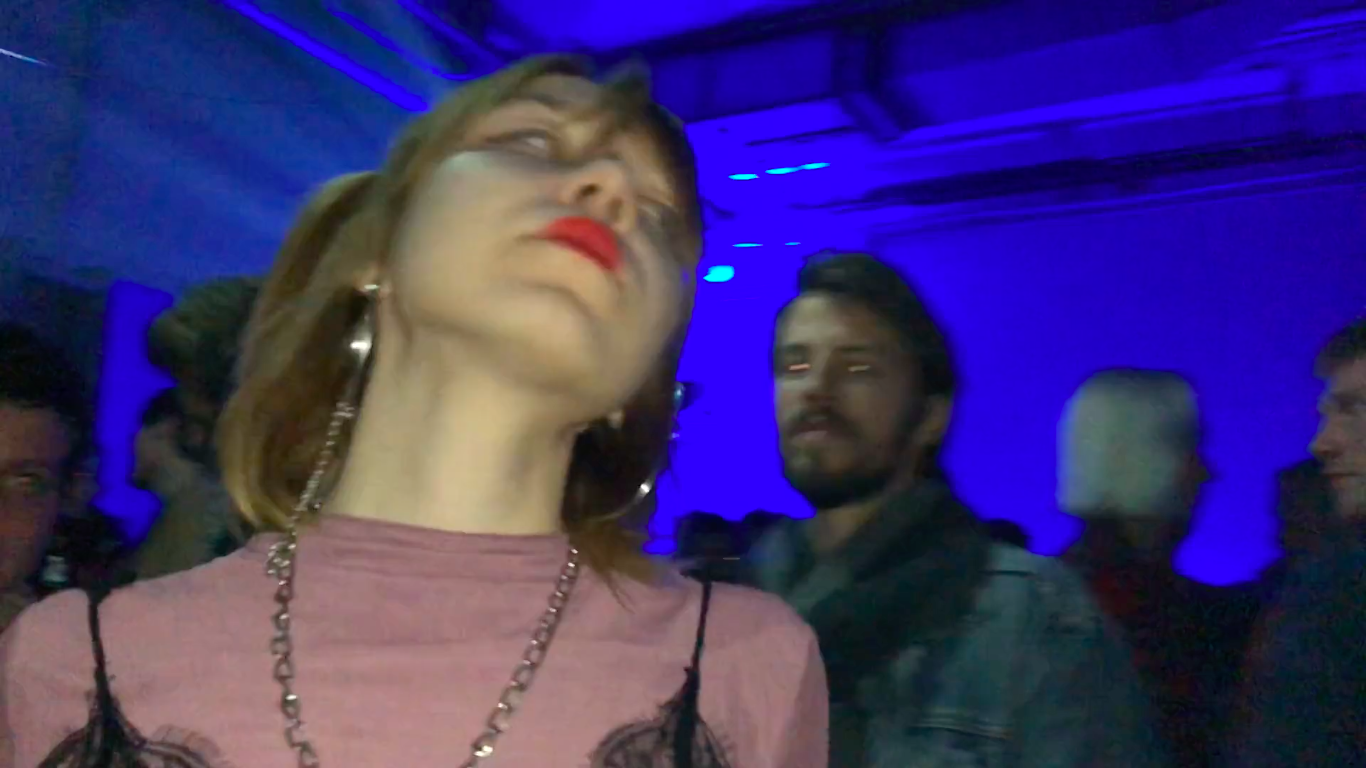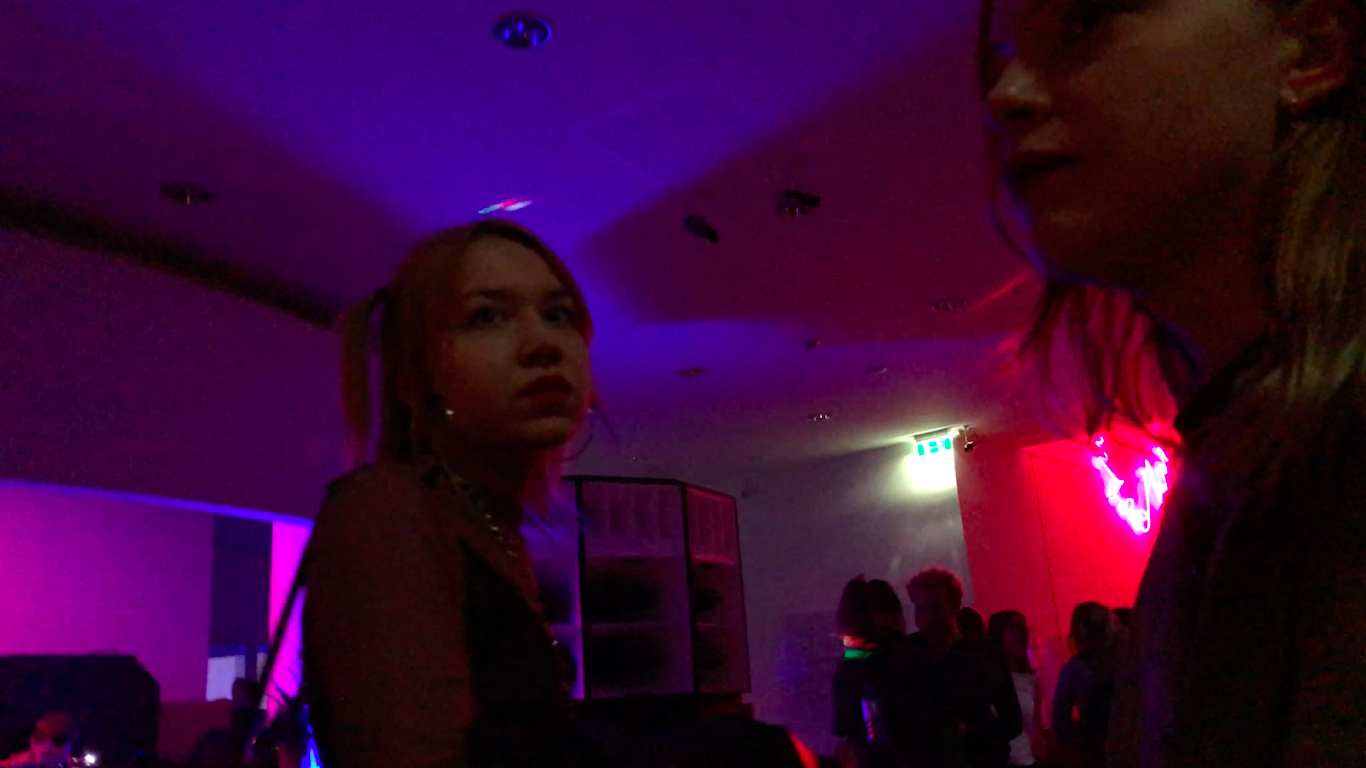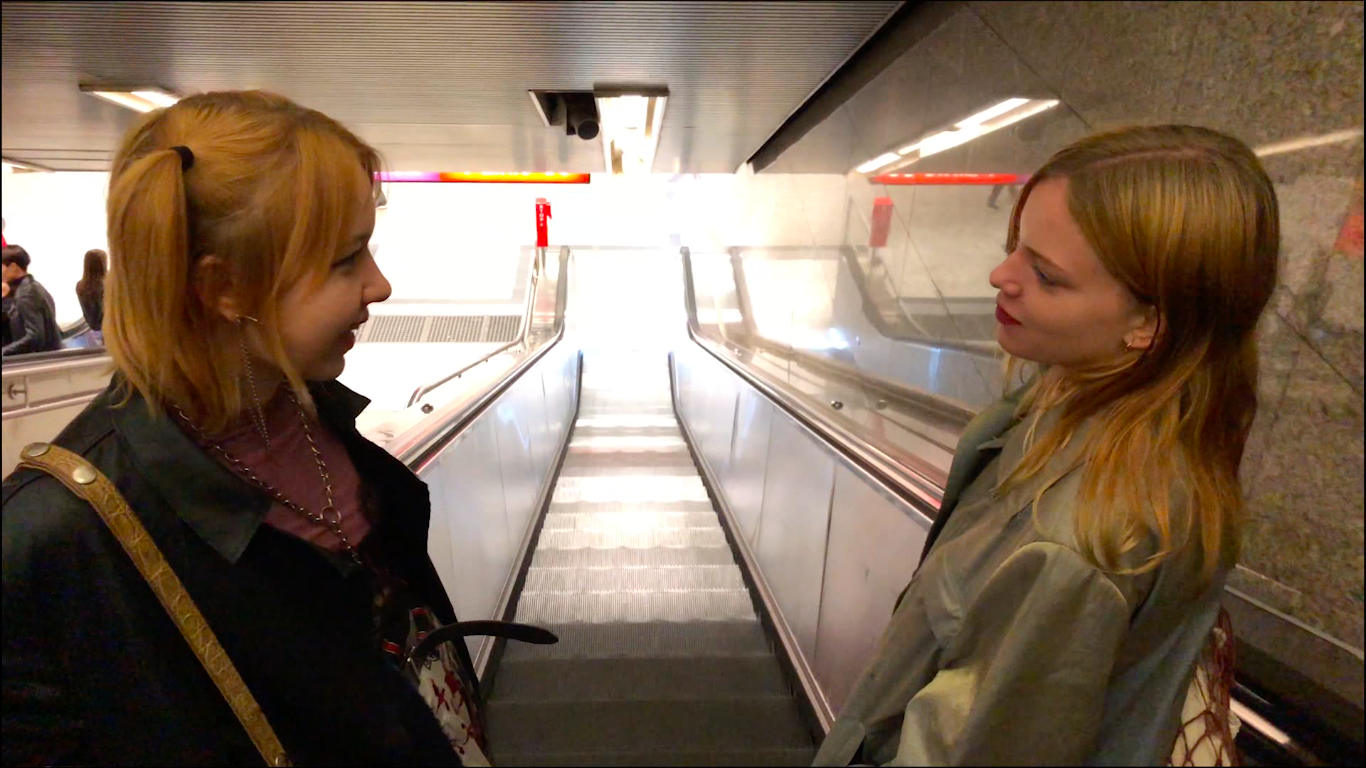LOLOLOL
Anthea’s working on her art in her studio, which is also her home. A two-dimensional Plexiglas image emerges; it shows hard to interpret forms: animals or arcane symbols, which match the way the protagonist looks. She has on a T-shirt from the doom metal band Saint Vitus, black miniskirt, delicate chain belt, and pale orange hair, completed with the omnipresent work and communication technology. Retro-modern. As Anthea sits in the swing set up in the door frame and checks her cell phone, the picture format has already changed from landscape to portrait. The movement goes Ti(c)k To(c)k, the cell phone—also the one that the camera woman Caroline Bobek uses to film—doesn’t care much about antiquated conformities. This applies especially to the language the people interacting in Kurdwin Ayub’s LOLOLOL speak, which their parents—a generation recently identified by the phrase, “OK Boomer”—find little or no access to, because they’re too concerned with grammar and too little with the contexts of their children’s lives.
The level of understanding of the clique that has formed is characterized by a charming blend of traditional Viennese dialect and articulated internet abbreviations – “ur (extremely) weird.” Anthea says she likes it when relationships that were once “random,” become normalized again, it was the “Höhepunkt (climax) of randomness” corroborates her friend. Over the course of the evening, Anthea gets lost between mega art event and clubbing atmosphere, at times it seems exhausting: the art, the encounters, the small talk. But when the next day dawns with a gaze at the cell phone, the fleetingness is able to find new strength again. Voll (totally) nice. (Melanie Letschnig)
Translation: Lisa Rosenblatt
LOLOLOL
2020
Austria
20 min



